Choosing the right color of light for your bedroom can make a real difference in how quickly you fall asleep and how well you rest. While complete darkness is the goal, using warm light from colors like red and amber can create a sleep-friendly space by supporting your body’s natural melatonin production. As someone who’s spent years dialing in my own sleep hygiene tips, I’ve learned that understanding how light affects our internal clock is a huge step. It helps you make smarter choices about your bedroom lighting and evening habits.
Why Light Color Matters for Sleep Quality
Have you ever wondered why you feel energized in a brightly lit office but relaxed in a room with dim, warm lamps? It’s all about how our brains interpret light. Exposure to light is the primary signal that controls our circadian rhythm, and different colors send very different messages.
Your brain doesn’t see all light the same. Short-wavelength, cooler colors like blue tell your brain it’s daytime and time to be alert. Longer-wavelength, warmer colors like red signal that it’s time to wind down. Getting this wrong in the hours before bed can leave you tossing and turning.
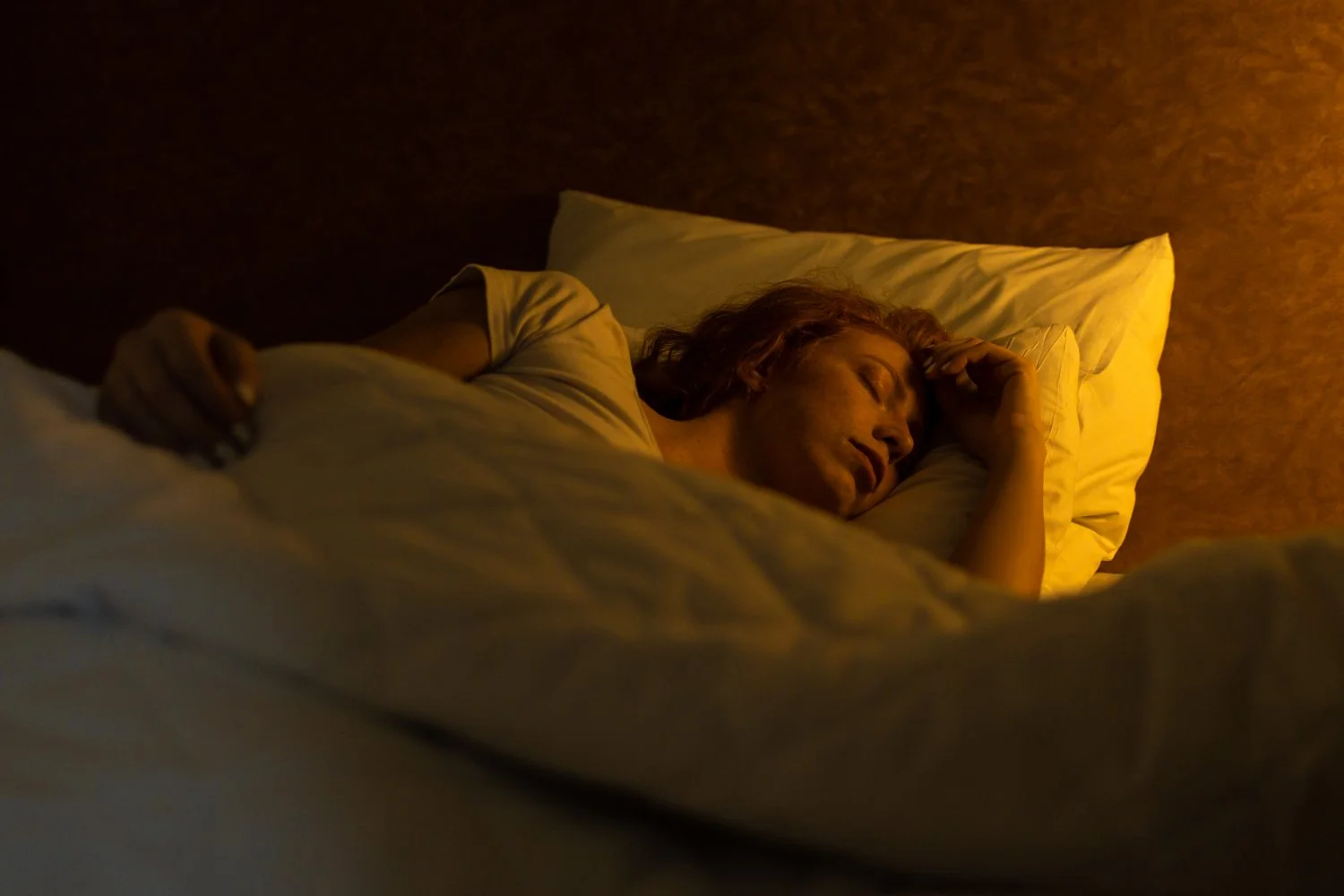
How Your Circadian Rhythm Responds to Light
Think of your circadian rhythm as your body’s internal 24-hour clock. It’s managed by a tiny region in your brain that responds directly to light cues from your eyes. During the day, bright, natural light tells this clock, “Stay awake! Be productive!”
As evening approaches and the sun sets, the fading light signals that it’s time to prepare for rest. This triggers the pineal gland to start its work. However, if you expose yourself to bright, cool-toned light in the evening, you essentially send your brain confusing signals, disrupting this natural sleep-wake cycle and making it harder to fall asleep.
The Role of Melatonin in Sleep
Melatonin is often called the “sleep hormone,” and for good reason. When your brain senses darkness, the pineal gland starts releasing melatonin into your bloodstream. This is the hormone that makes you feel drowsy and signals to your body that it’s time to sleep.
The problem is that certain light colors, especially blue, are powerful melatonin suppressors. Even a short burst of blue light from your phone or an overhead LED can halt melatonin production, pushing your bedtime back. On the other hand, warm-colored lights have a minimal effect, allowing your body to produce melatonin naturally so you can drift off easily.
Red Light: The Top Choice for Sleep
If you need some light in your bedroom before bed or during the night, red light is your best option. It stands out as the most sleep-friendly color because it has the least impact on your circadian rhythm.

Because red light has a long wavelength, your brain is not very sensitive to it. It doesn’t suppress melatonin production, which means you can use a dim red light to read or navigate your room without waking your brain up. This is incredibly helpful if you often wake up at night. A 2012 study even found that red light therapy helped improve sleep quality and melatonin levels in a group of athletes.
How Red Light Supports Melatonin Production
The science is pretty straightforward: red light contains virtually no blue light wavelengths. Since blue light is the main culprit behind melatonin suppression, red light doesn’t trigger the “wake up” signal in your brain. This allows your body’s melatonin levels to rise naturally as you prepare for bed, helping you feel sleepy at the right time. It’s a simple bio-hack that supports your body’s innate processes instead of fighting against them.
Best Ways to Use Red Light at Night
Incorporating red light into your evening routine is easy. Here are a few ways I’ve done it:
- Switch Your Bulbs: Replace the bulb in your bedside lamp with a dim red light bulb.
- Nighttime Navigation: Use a red light nightlight in your hallway or bathroom to avoid turning on harsh overhead lights during middle-of-the-night trips. This can be a huge help if you’re trying to figure out how to fix your sleep schedule.
- Dim It Down: Always choose the dimmest possible setting. The goal is gentle visibility, not bright illumination.
Amber and Orange Light for Relaxation
If red light feels a bit too intense, amber and orange lights are fantastic alternatives. These colors are also low on the blue light spectrum and create an incredibly cozy and calming atmosphere, much like candlelight or a fireplace.
Amber light, in particular, mimics the color of a natural sunset. This visual cue instinctively tells your brain that the day is ending and it’s time to start winding down. It’s a gentle, effective way to prepare your mind and body for rest.
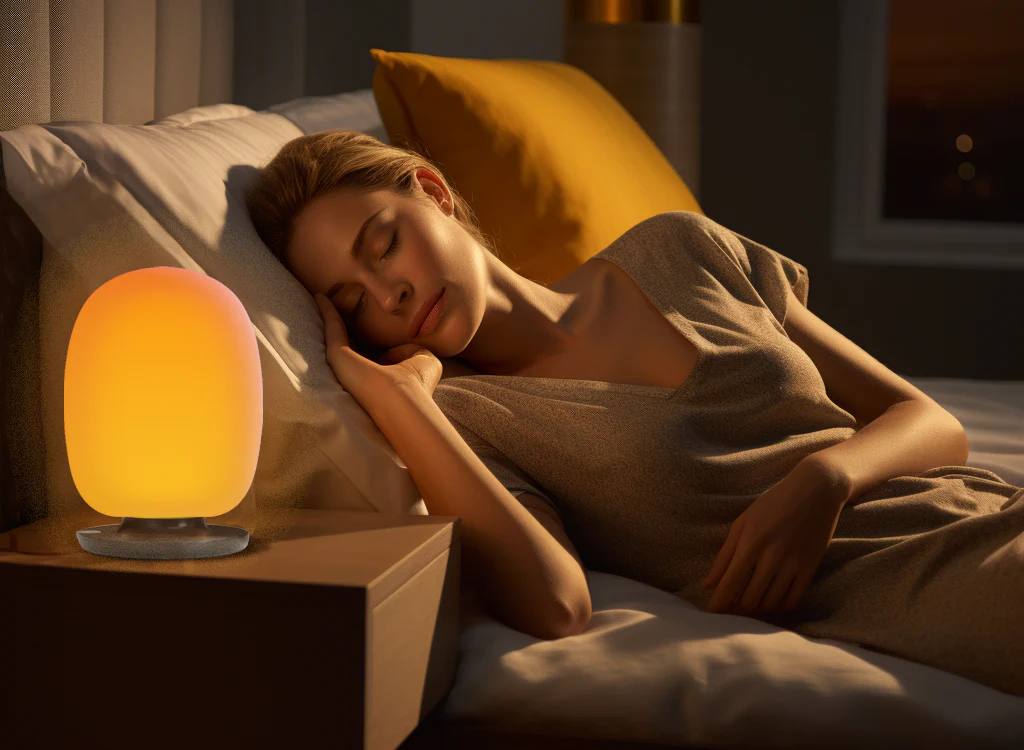
Why Warm Tones Create a Sleep-Friendly Environment
There’s both a psychological and physiological reason why warm tones are so relaxing. Psychologically, we associate these colors with warmth, safety, and calm—think of a campfire or a sunset. Physiologically, amber and orange light have a minimal impact on your circadian rhythm, allowing melatonin production to proceed without interruption. This combination helps reduce stress and ease you into a state of relaxation perfect for sleep.
Choosing Amber or Orange Bulbs and Lamps
When shopping for bulbs, look for a color temperature around 2000-2500K. This information is usually on the box. These bulbs are perfect for bedside lamps or any other lights you use in the last couple of hours before bed. Placing an amber lamp across the room, rather than right next to your bed, can create a soft, ambient glow that’s perfect for unwinding.
Yellow Light: A Gentle Middle Ground
Yellow light is another warm option that’s generally considered sleep-friendly, as long as it’s kept dim. It contains slightly more blue light than red or amber, but far less than cool white or blue lights. When used at a low intensity, it has a very small impact on melatonin. It’s a decent middle ground if you find red or amber light to be too stylized for your decor.
Blue and White Light: What to Avoid at Night
This is the big one. Blue and white lights are the worst offenders when it comes to sleep disruption. They have short wavelengths that your brain interprets as midday sun, which powerfully suppresses melatonin production and promotes alertness.
Most standard overhead lights and LED bulbs are “cool white,” which contains a significant amount of blue light. Turning these on in the evening can trick your brain into thinking it’s still daytime, making it difficult to fall asleep later. This is why creating a “digital sunset” by dimming and warming your lights is so important.
The Problem with Electronic Devices Before Bed
Smartphones, tablets, laptops, and TVs are all major sources of blue light. Scrolling through your phone in bed might feel relaxing, but you’re blasting your eyes with a signal that says, “Wake up!” This is a major reason so many of us struggle with how to sleep early.
Fortunately, there are simple fixes:
- Use Night Mode: Most devices have a “night mode” or “blue light filter” that warms the screen color in the evening. Turn this on!
- Set a Digital Curfew: Try to put all screens away at least an hour before you plan to sleep.
- Wear Blue-Light-Blocking Glasses: If you must use screens at night, these glasses can help filter out the disruptive wavelengths.
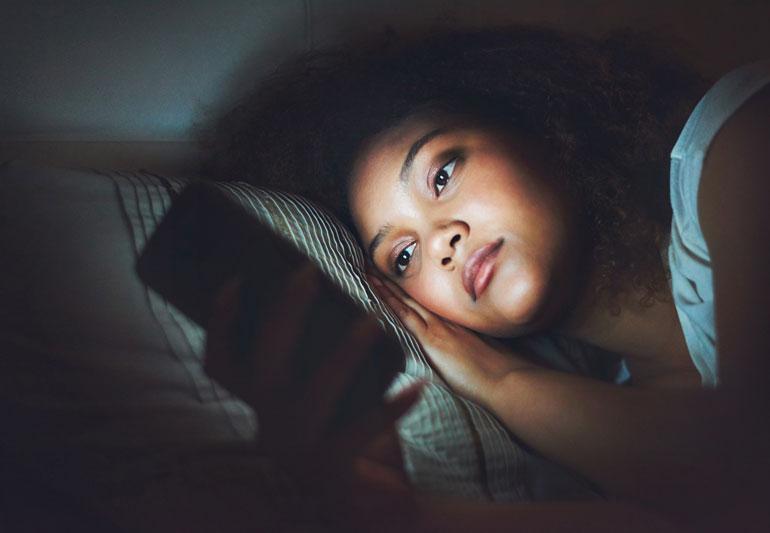
Understanding Color Temperature (Kelvin)
When you buy a light bulb, you’ll see a number followed by “K”—that’s the color temperature measured in Kelvin. Here’s a simple guide:
- Warm Light (Sleep-Friendly): 2000K-3000K. This range includes red, amber, and warm yellow tones.
- Cool Light (Alerting): 3100K-4500K. This is a bright, neutral white.
- Daylight (Very Alerting): 4600K and up. This light mimics bright, midday sun and is very high in blue light.
For evening use, always stick to the lower end of the Kelvin scale.
Green and Violet Light Effects on Sleep
What about other colors like green and violet? While research is ongoing, current evidence suggests they are best avoided at night. Green light can still suppress melatonin, though less than blue light. Violet and purple tones are very close to blue on the light spectrum and are likely to have a similar alerting effect. To be safe, it’s best to stick with the warm end of the spectrum—red, orange, and amber.
Darkness vs. Colored Night Lights
Let’s be clear: the absolute best environment for sleep is complete darkness. A dark room allows your body to produce the maximum amount of melatonin and achieve the deepest, most restorative rest.
However, a pitch-black room isn’t practical or comfortable for everyone. Sometimes, a little bit of light is necessary. This is where a colored night light becomes a great compromise, offering visibility without significantly disrupting your sleep.
When You Might Need a Night Light
Using a night light isn’t a failure—it’s a practical solution for many situations:
- Safety: To prevent trips and falls during nighttime bathroom visits.
- Children: To provide comfort and security for kids who are afraid of the dark.
- Convenience: To navigate a room without waking a partner.
In these cases, the goal is to use the least disruptive light possible, which brings us back to red.
The Power of Personal Preference
Interestingly, one study found that people fell asleep faster when exposed to their preferred color of light. This may be because feeling comfortable and relaxed activates the parasympathetic nervous system—our “rest and digest” mode. So, if you need a night light and have a strong preference for a warm color like amber over red, choosing the one that makes you feel most at ease might give you an extra psychological boost toward sleep.
Practical Tips for Better Sleep Lighting
Ready to improve your sleep lighting? Here are some actionable tips you can start using tonight. These are key to building good sleep habits.
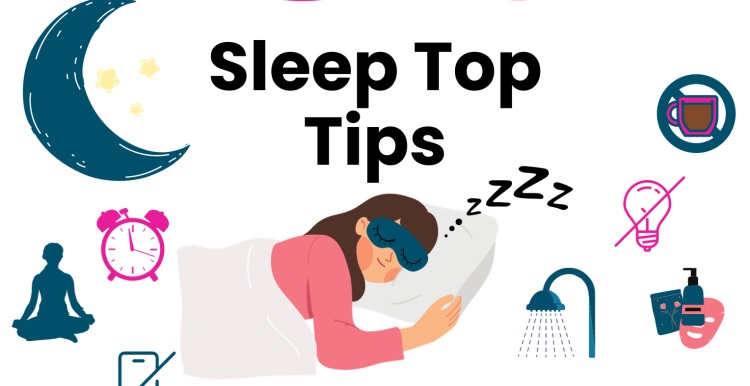
- Create a “Sunset” Routine: Start dimming your lights an hour or two before bed.
- Change Your Bulbs: Swap out the cool white bulbs in your bedroom and bathroom for warm-toned ones (under 3000K).
- Use Smart Bulbs: Smart bulbs are a great investment, allowing you to change the color and brightness from your phone. You can even schedule them to warm up and dim automatically each evening.
- Go Dark: Use blackout curtains or an eye mask to make your bedroom as dark as possible.
- Be Consistent: A consistent lighting routine helps reinforce your circadian rhythm, making it easier to fall asleep and wake up.
Morning Light Matters Too
Your body’s clock doesn’t just respond to evening light. Getting bright light exposure, preferably from the sun, shortly after you wake up is crucial for resetting your circadian rhythm. This tells your body that the day has officially started, which helps regulate your internal clock and sets you up for better sleep that night. If you can’t get outside, turning on bright indoor lights can also help.
Creating a healthy sleep environment is one of the kindest things you can do for your body and mind. By being mindful of the light around you, you’re taking a powerful step toward better rest. For more thoughts on wellness and finding what works for you, feel free to explore more at www.notonetype.org.

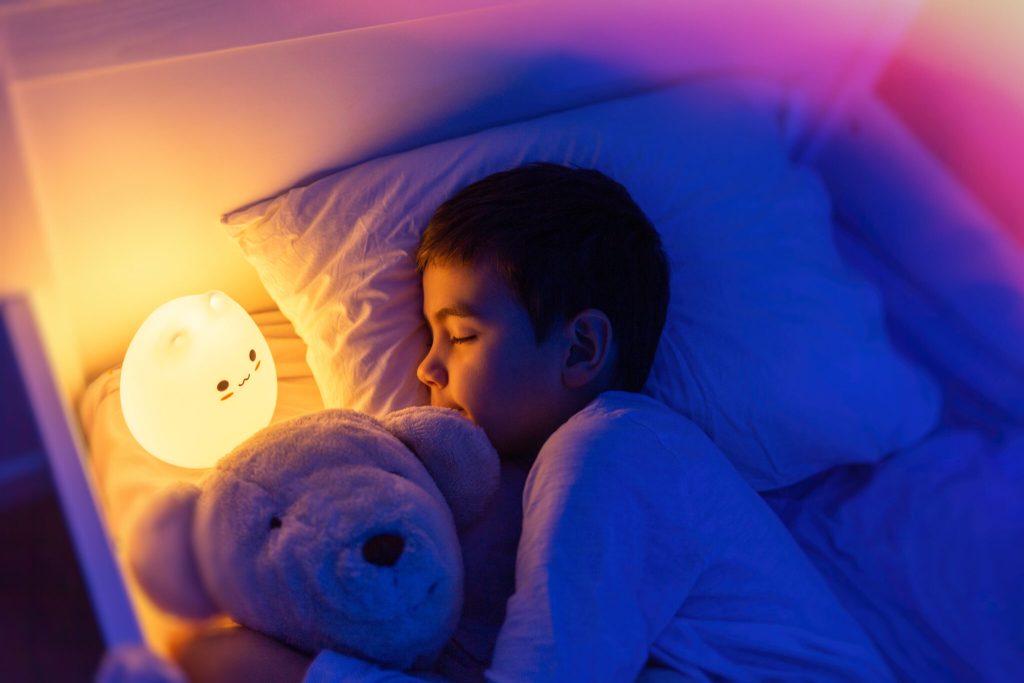
You may also like this
How to Sleep Early: Practical Steps to Shift Your Bedtime
Struggling to fall asleep early? You’re not alone. For years, I was a night owl,...
Nov
How to Sleep When Stressed: Easy Tips for Better Rest
Stress can make falling asleep and staying asleep feel impossible. When you’re stressed, the body’s...
Nov
Best Position to Sleep: Left Side or Right Side?
Have you ever woken up feeling stiff or noticed that late-night snack didn’t sit so...
Nov
The Best Sleep Position: Which One Is Right for You?
The position you sleep in can make or break your night’s rest—and your next-day comfort....
Nov
How to Fix Your Sleep Schedule: Practical Tips for Better Sleep
Feeling like a zombie during the day and wide awake at night? I’ve been there....
Nov
Sleep Hygiene Tips: 15+ Proven Ways to Sleep Better Tonight
Sleep hygiene is one of the simplest yet most effective ways to reclaim quality rest....
Nov